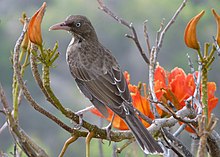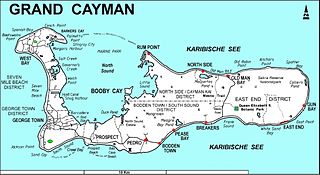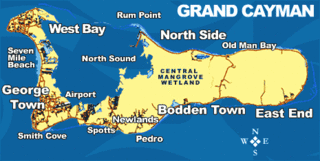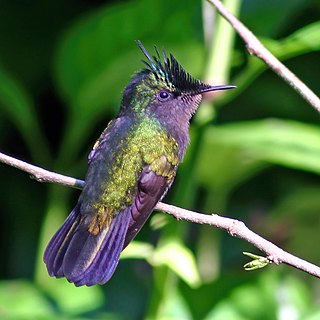

Forest Bay Pond is a small wetland in Anguilla, a British Overseas Territory in the Caribbean Sea. It forms one of the territory's Important Bird Areas (IBAs).


Forest Bay Pond is a small wetland in Anguilla, a British Overseas Territory in the Caribbean Sea. It forms one of the territory's Important Bird Areas (IBAs).
The IBA comprises a small brackish lagoon and its associated vegetation, with an area of about 3 hectares (7.4 acres), on the mid south-eastern coast of the main island, next to Forest Bay. It receives water from rainfall runoff as well as seawater seepage from the bay. It consists of two basins that are separated by a mudflat when the water level is low. The western and southern side has a substrate of limestone; that of the eastern is sand and marl. The pond contains widgeongrass while its surrounds are vegetated with white and buttonwood mangroves, as well as sea grape and other shrubs. [1]
The IBA was identified as such by BirdLife International because it supports populations of green-throated caribs, Caribbean elaenias, pearly-eyed thrashers and Lesser Antillean bullfinches. [1]

The Virgin Islands National Park is an American national park preserving about 60% of the land area of Saint John in the United States Virgin Islands, as well as more than 5,500 acres of adjacent ocean, and nearly all of Hassel Island, just off the Charlotte Amalie, Saint Thomas harbor.
Great Pond is a 50 ha saline coastal lagoon on the south-eastern shoreline of the island of Saint Croix in the United States Virgin Islands.

The Bluff is the highest part of the Cayman Islands, a British Overseas Territory in the Caribbean Sea. It stands at the eastern end of the island of Cayman Brac and has a maximum elevation of 43 m (141 ft).

Long Pond, also known as Long Salt Pond, is a 23 ha brackish lagoon on the central south-eastern coast of the main island of Anguilla, a British Overseas Territory in the Caribbean. About 1.2 km long, it is separated from the sea at its eastern end by sand dunes. Its south shore is separated from the sea by a 300 m wide strip of scrub vegetation on limestone. The area to the north and west is residential.

Booby Pond Nature Reserve is a protected wetland on Little Cayman, one of the Cayman Islands, a British Overseas Territory in the Caribbean Sea.

The Botanic Park and Salina Reserve Important Bird Area comprises two separate sites on Grand Cayman, one of the Cayman Islands, a British Overseas Territory in the Caribbean Sea.

The Central Manrove Wetland is a large area of mangrove dominated wetland on Grand Cayman, one of the Cayman Islands, a British Overseas Territory in the Caribbean Sea. It is one of the territory's Important Bird Areas (IBAs).

The Crown Wetlands lie on Little Cayman, one of the Cayman Islands, a British Overseas Territory in the Caribbean Sea. Collectively they form one of the territory's Important Bird Areas (IBAs).

The Eastern Dry Forest lies at the eastern end of Grand Cayman, one of the Cayman Islands, a British Overseas Territory in the Caribbean Sea. It is one of the territory's Important Bird Areas (IBAs).

Mastic Reserve lies at the eastern end of the North Side of Grand Cayman, one of the Cayman Islands, a British Overseas Territory in the Caribbean Sea. It, with the associated Mastic Trail, is managed by the National Trust for the Cayman Islands and is one of the territory's Important Bird Areas (IBAs). It is named after the yellow mastic and black mastic trees which occur in the reserve.

Road Salt Pond, also known as Road Bay Pond or simply Road Pond, is a wetland in Anguilla, a British Overseas Territory in the Caribbean Sea. It is one of the territory's Important Bird Areas (IBAs).

Cauls Pond is a wetland in Anguilla, a British Overseas Territory in the Caribbean Sea. It is one of the territory's Important Bird Areas (IBAs).

West End Pond is a wetland in Anguilla, a British Overseas Territory in the Caribbean Sea. It is one of the territory's Important Bird Areas (IBAs).

Rendezvous Bay Pond, also known as Rendezvous Bay Salt Pond, is a wetland in Anguilla, a British Overseas Territory in the Caribbean Sea. It is one of the territory's Important Bird Areas (IBAs).

Meads Bay Pond is a wetland in Anguilla, a British Overseas Territory in the Caribbean Sea. It is one of the territory's Important Bird Areas (IBAs).

The Merrywing Pond System is a golf course wetland system in Anguilla, a British Overseas Territory in the Caribbean Sea. It forms one of the territory's Important Bird Areas (IBAs).

Centre Hills is a forest reserve on the island of Montserrat, a British Overseas Territory in the Leeward Islands of the Caribbean Sea. It forms one of the territory's Important Bird Areas (IBAs), which encompasses the forest reserve as well as additional habitat for the Montserrat oriole, the territory's endemic, and critically endangered, national bird.

The Fish Ponds and Crossing Place Trail Important Bird Area is a 1024 ha tract of land on the island of Middle Caicos in the Turks and Caicos Islands, a British Overseas Territory in the Lucayan Archipelago of the western Atlantic Ocean. It forms one of the territory's Important Bird Areas (IBAs).

Fresh Pond is a 14 ha water body in the country of Sint Maarten on the island of Saint Martin in the Dutch Caribbean. It has been identified as an Important Bird Area by BirdLife International because it supports populations of various threatened or restricted-range bird species. Some 2.5 km long by 1 km across, it lies within the capital city of Philipsburg. Because of its low salinity, it supports species which are less common in other parts of the island. The pond is bordered with reeds, mangroves and coconut palms. American coots have been recorded breeding at the site, as well as snowy egrets, pied-billed grebes, common moorhens, great egrets, white-cheeked pintails and ruddy ducks. Other birds for which the IBA was designated include green-throated caribs, Antillean crested hummingbirds, Caribbean elaenias, pearly-eyed thrashers and lesser Antillean bullfinches.

Little Bay is an 8 ha coastal pond in the country of Sint Maarten on the island of Saint Martin in the Dutch Caribbean. It has a low salinity and lies near the capital, Philipsburg. It has been identified as an Important Bird Area by BirdLife International because it supports threatened or restricted-range bird species. Birds for which the IBA was designated include green-throated caribs, Antillean crested hummingbirds, Caribbean elaenias, pearly-eyed thrashers and lesser Antillean bullfinches. Pied-billed grebes, common moorhens, American coots, white-cheeked pintails and ruddy ducks have been recorded nesting at the site.
18°11′27″N63°03′33″W / 18.19083°N 63.05917°W